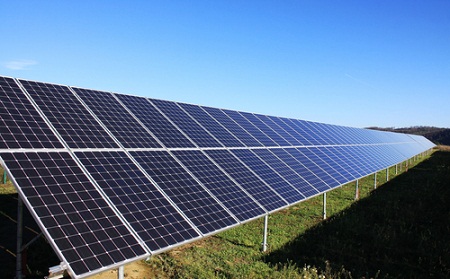The White House pointed to a new independent report into the government’s energy loan portfolio as evidence that the program has functioned well and “holds less than the amount of risk envisioned by Congress when it created and funded the program.”
Did that lead House Republicans to drop their objections to the program and beg the president to start issuing new loans? Not quite. Energy and Commerce Committee Chairman Fred Upton and Oversight and Investigations Subcommittee Chairman Cliff Stearns called the audit “a long-overdue acknowledgement that the Obama administration has a problem.”

The audit [PDF] was done at the administration’s request by Herb Allison, a former Treasury official, Well Fargo executive and national finance chairman for John McCain’s 2000 presidential campaign. Allison’s 75-page report includes a number of recommendations for strengthening oversight of the program, but the key takeaway seems to be that the 30 loans for renewable energy and alternative vehicles that he looked at will likely end up costing the government about $2.7 billion.
That’s not chump change, but then again, government loan programs of all sorts have always built in an expectation that a small percentage of the loans will go belly-up. To cover those losses, the government estimates a “credit subsidy cost” for each loan. With some loan programs, the party receiving the loan has to pay that cost, which is often around 10 percent of the loan’s value. In 2009, with credit markets frozen, Congress appropriated $6 billion to pay credit subsidy costs for renewable energy loans to encourage participation in the program.
That money was chipped away at during the budget battles of that followed, and the most recent estimate from the U.S. Department of Energy (DOE) was that it had $2.9 billion in credit subsidy costs on the line. But Allison’s report says the risk is less than that—$200 million less. Thus, the White House’s claim of vindication.
“We have always known that there were inherent risks in backing innovative technologies at full commercial scale, and it is very likely that there will be other companies in the portfolio that won’t succeed,” Energy Secretary Steven Chu said. “But the vast majority of companies are expected to pay the loans back in full, on time and with about $8 billion in interest—while supporting a total of 60,000 American jobs and helping us compete for a rapidly growing global industry.”
The Republican critics were having nothing of it.
“It would be a stunning case of bureaucratic disregard to declare victory because the government is expecting to lose ‘just’ $3 billion,” Stearns (R-Fla.) and Upton (R-Mich.) said in a statement. “One key lesson is that taxpayers should not have been placed in the position to lose one dollar, let alone billions, all because the stimulus allowed companies with shaky finances to apply for and receive taxpayer support without putting up any money.”

Allison said the 30 evaluated loans in the DOE portfolio add up to a commitment of $23.77 billion. As of November 28, 2011, $8.30 billion, or 35 percent of that total, had actually gone out the door.
Allison’s analysis didn’t include looking at the two loans that failed, Solyndra and Beacon Power, because those companies are in bankruptcy. An interesting note on Beacon: Its bankruptcy in October 2011 was widely assumed to put $39 million in taxpayer money—the amount the company had received in government-backed loans—at risk. However, as the Associated Press reported, the recent purchase of the company’s assets by a private equity firm means “the total recovery for federal taxpayers will amount to about 70 percent of their investment.”
Allison did have recommendations to improve the loan program, including staffing a number of administrative vacancies, creating a “chief risk officer” position “dedicated to monitoring the programs, including the current credit and compliance functions” and building “a more robust website …. to provide timely information to the public on the performance of the program.”